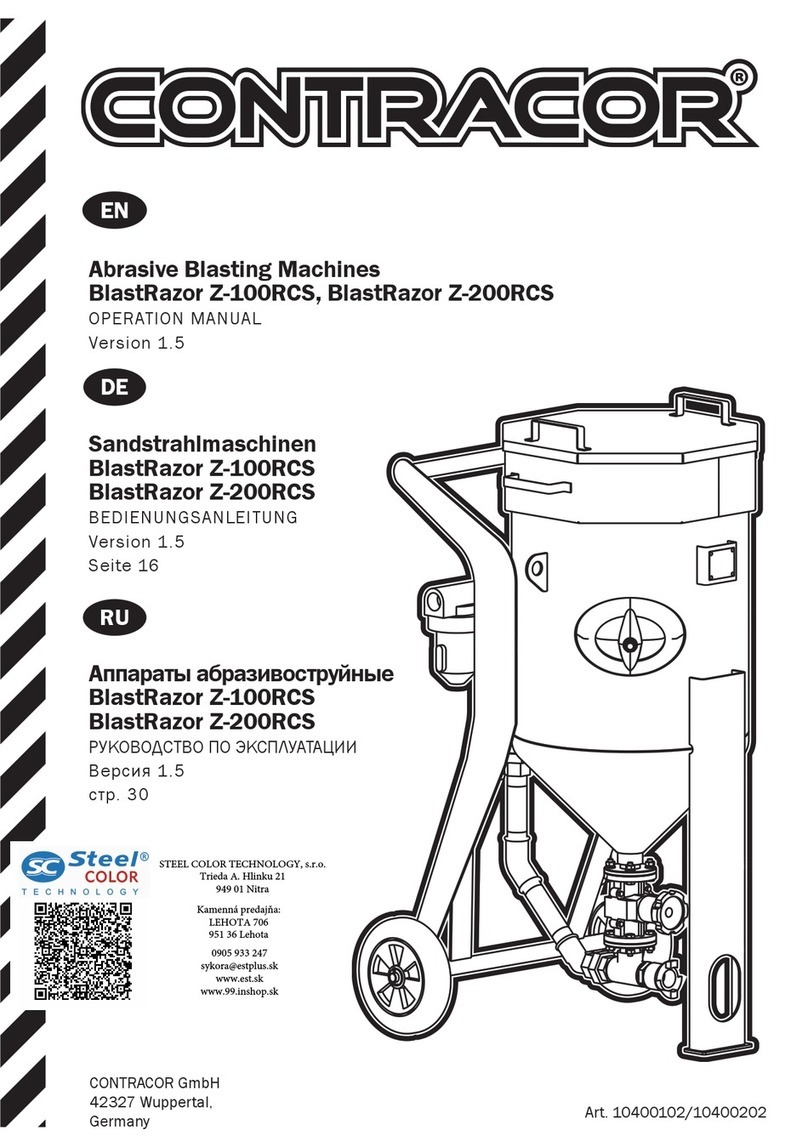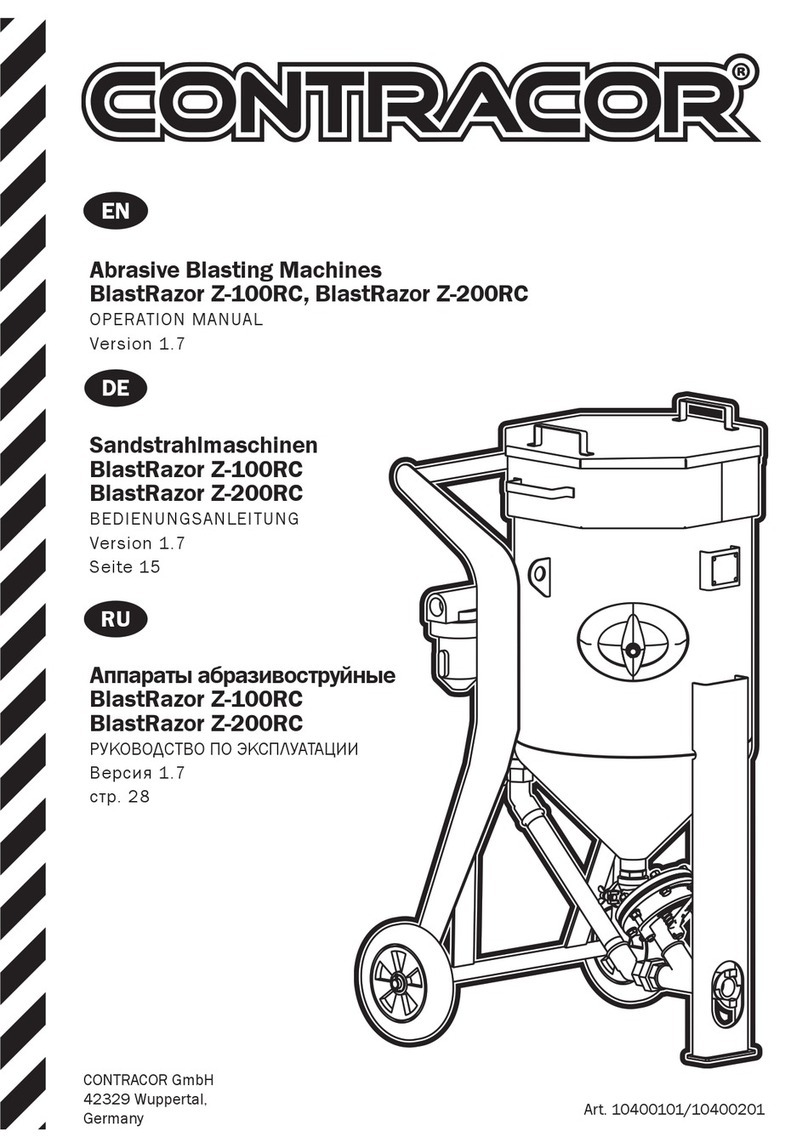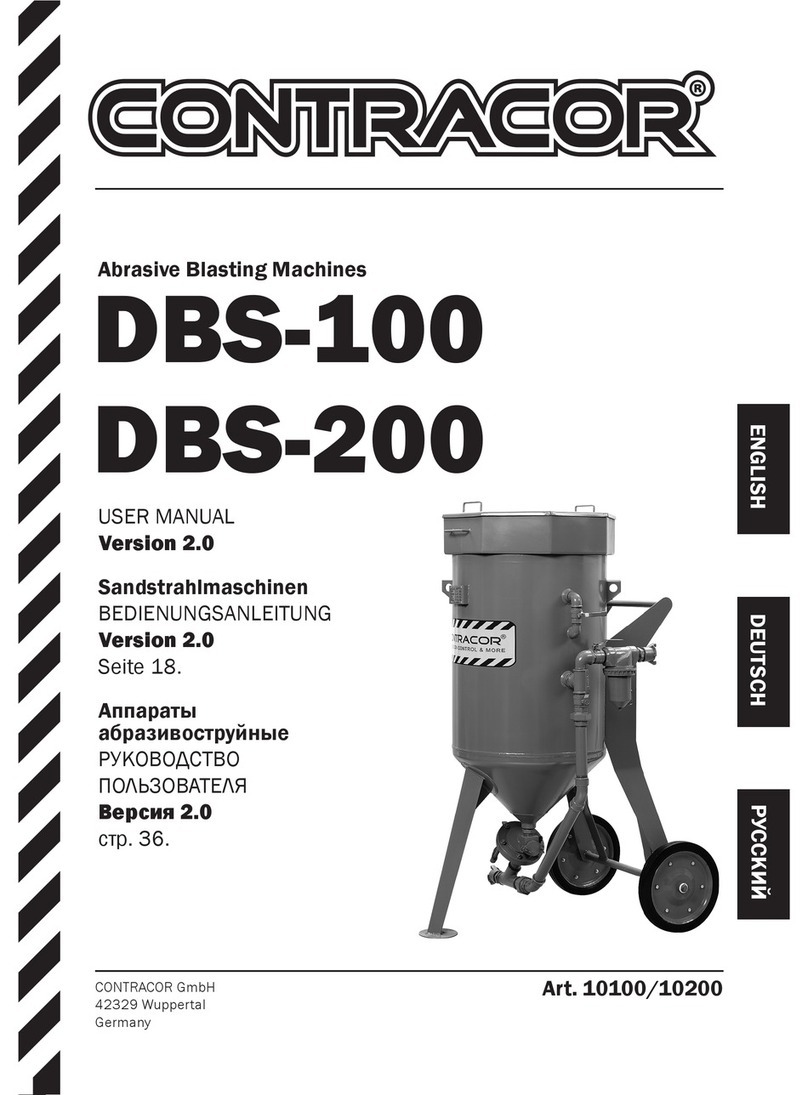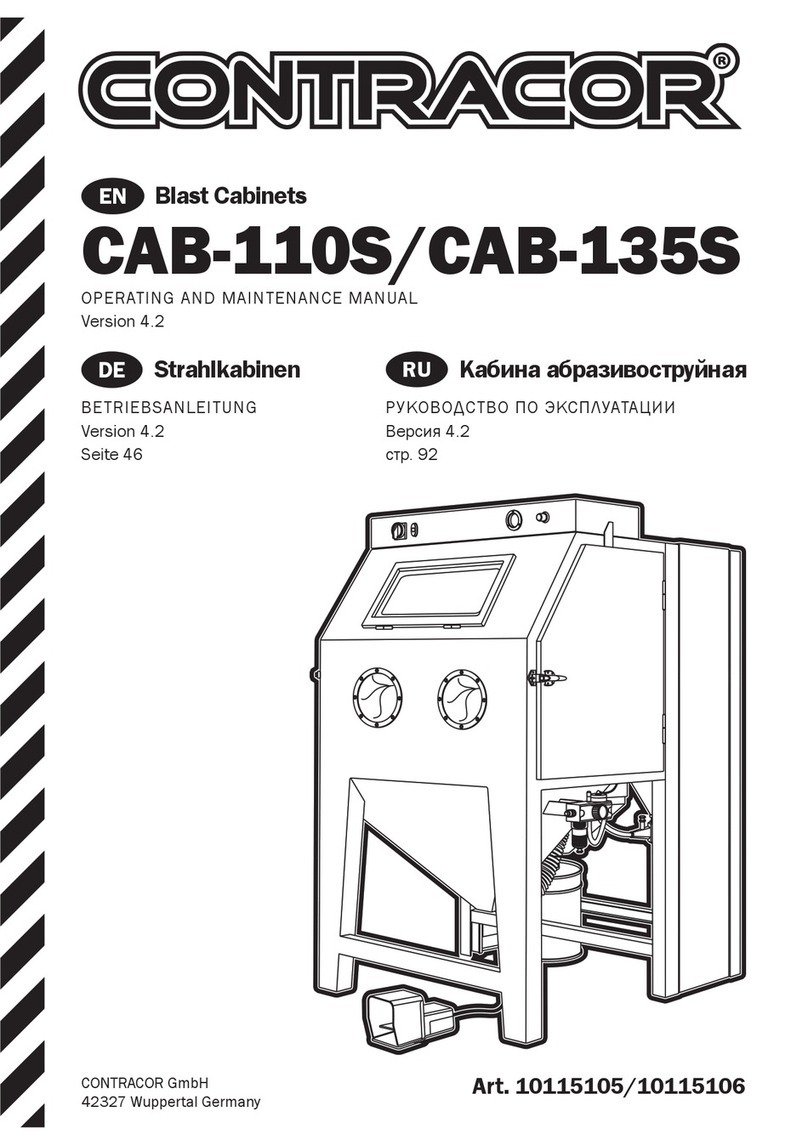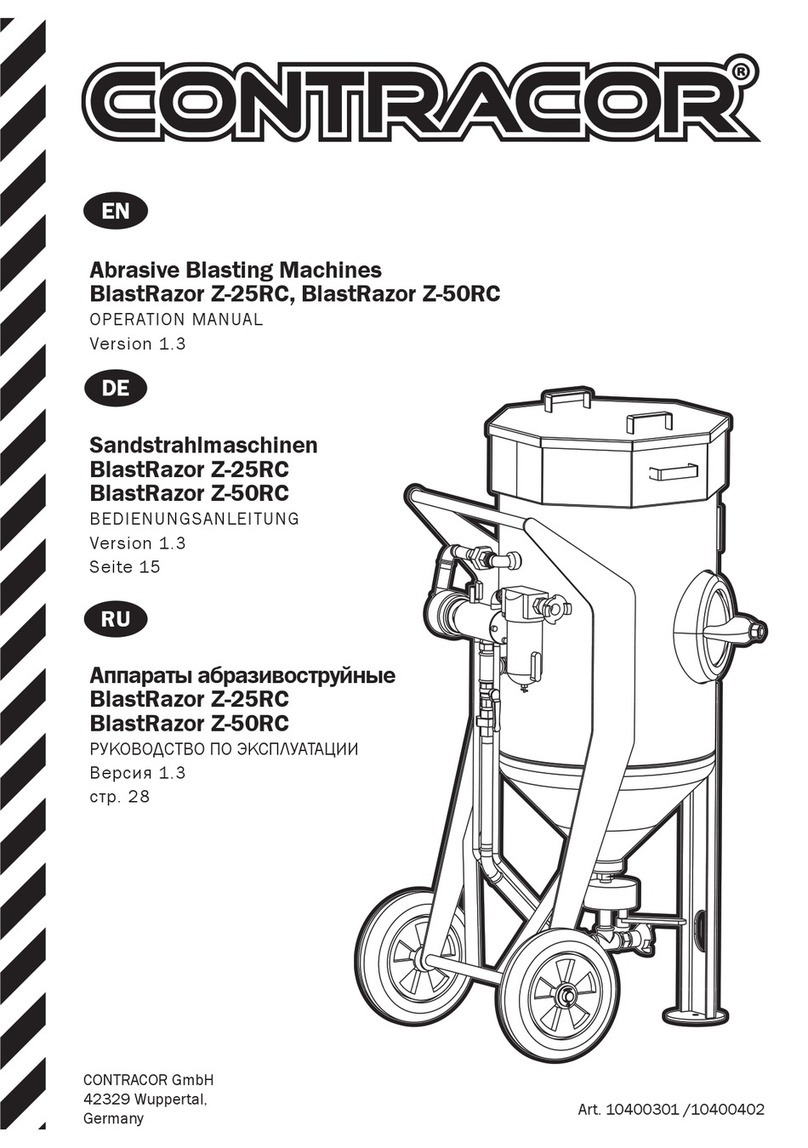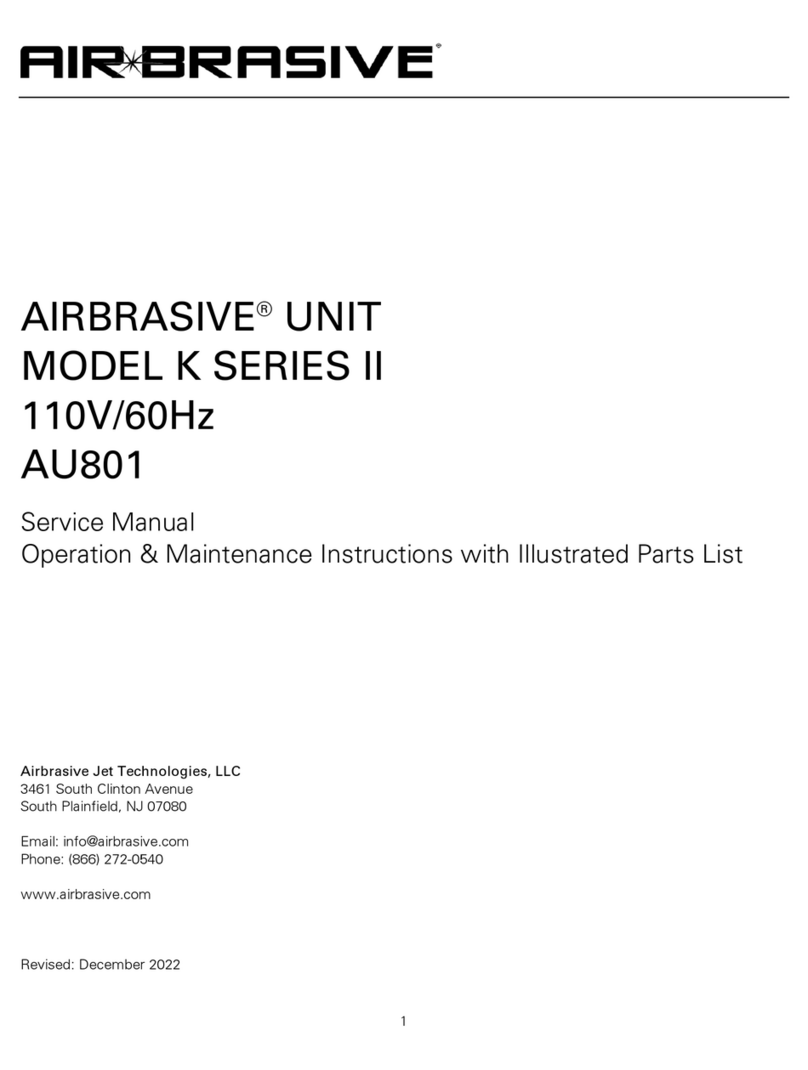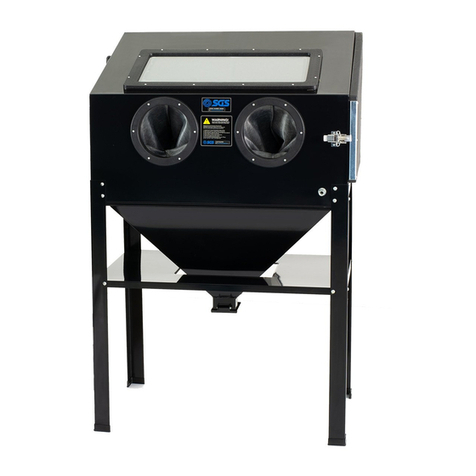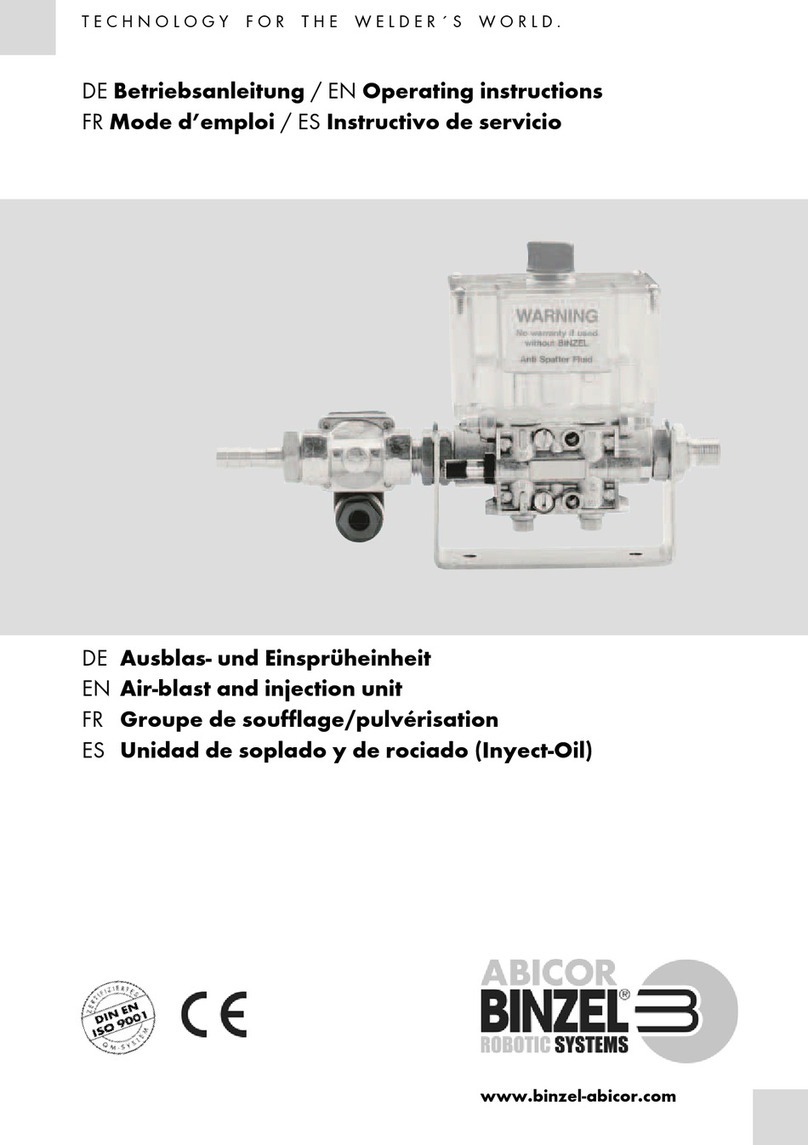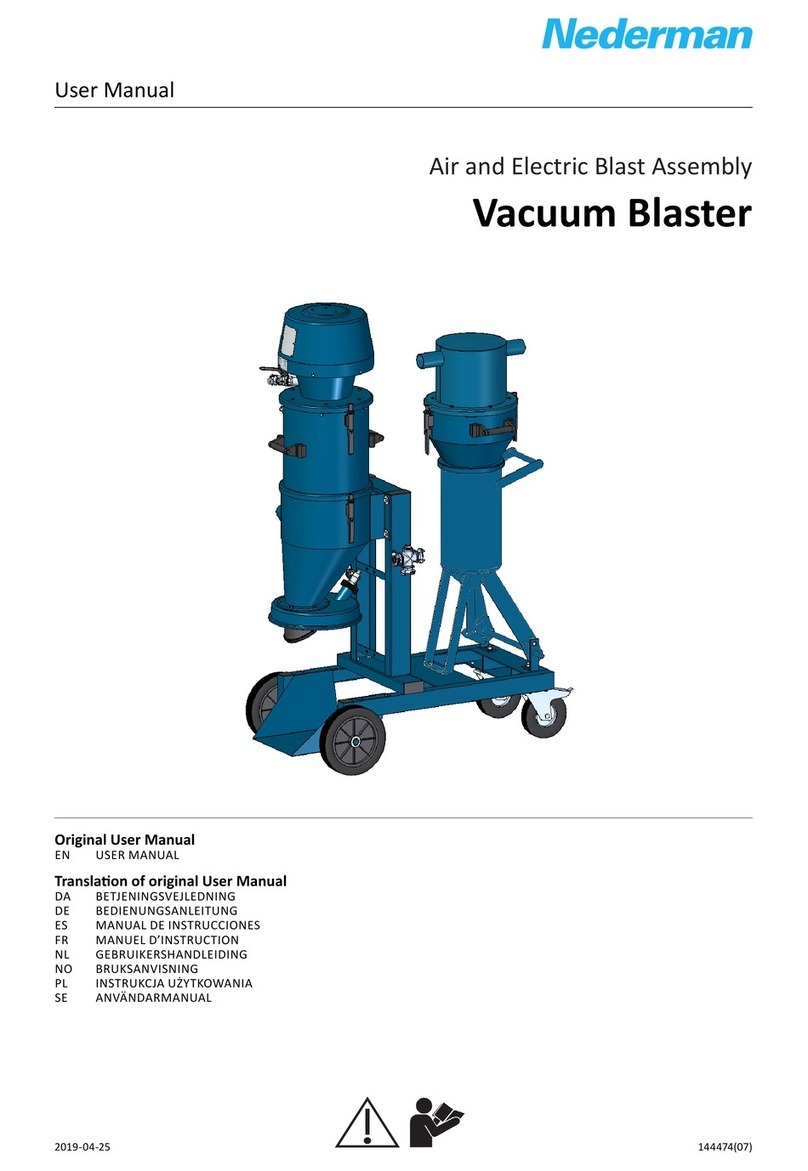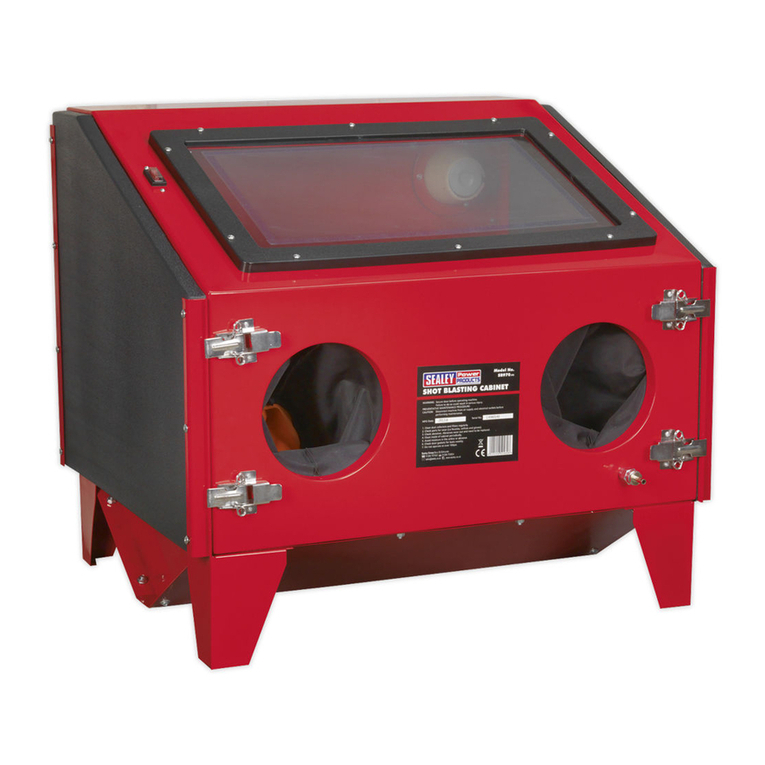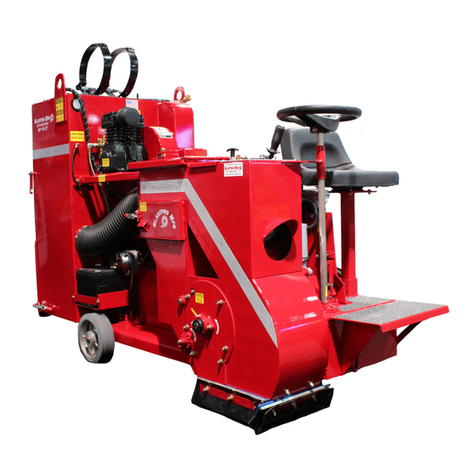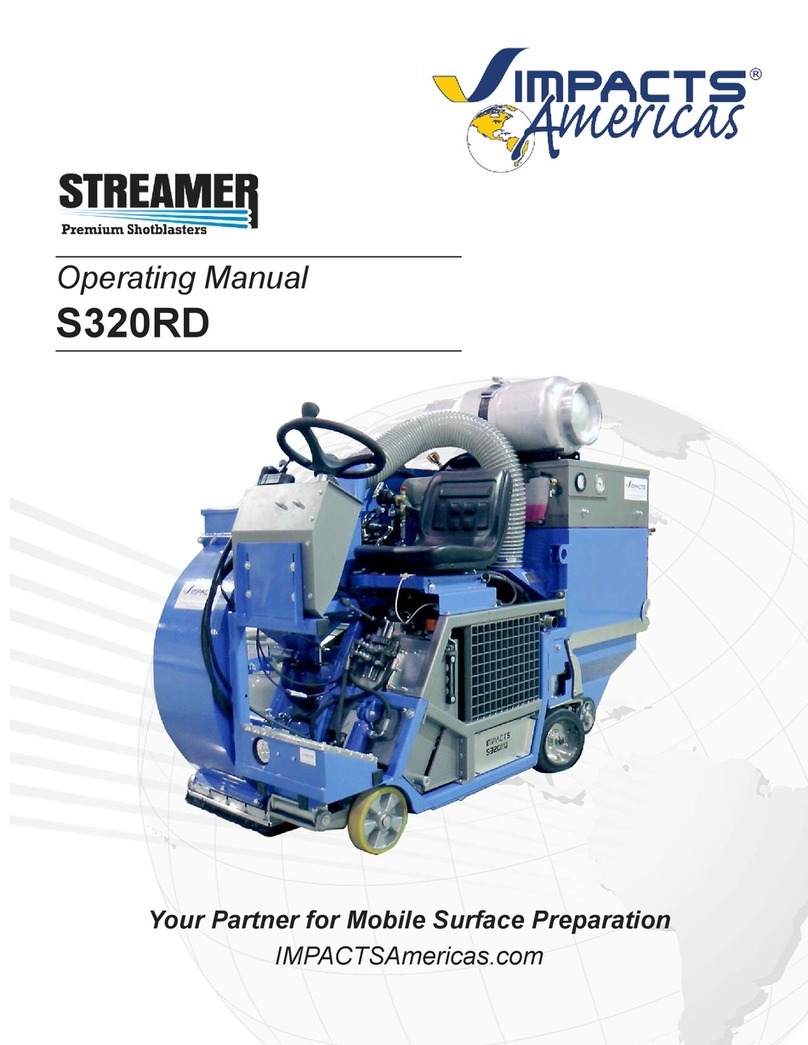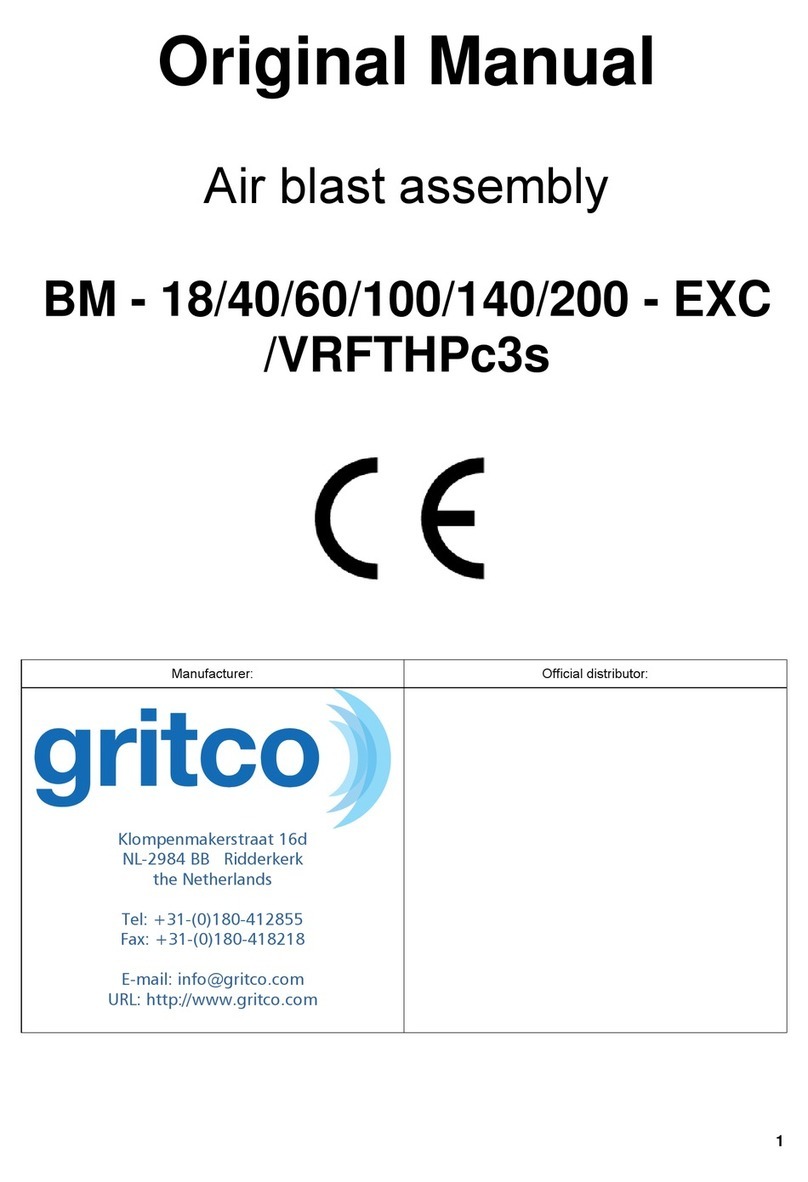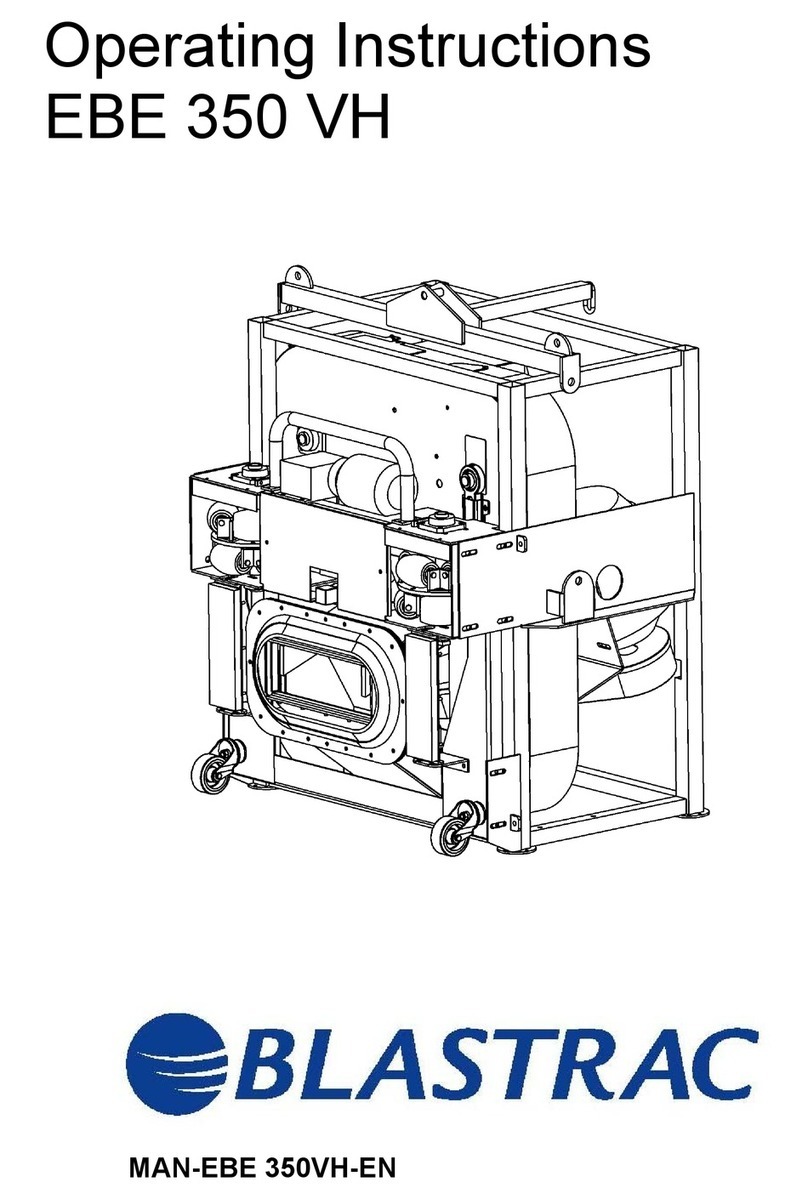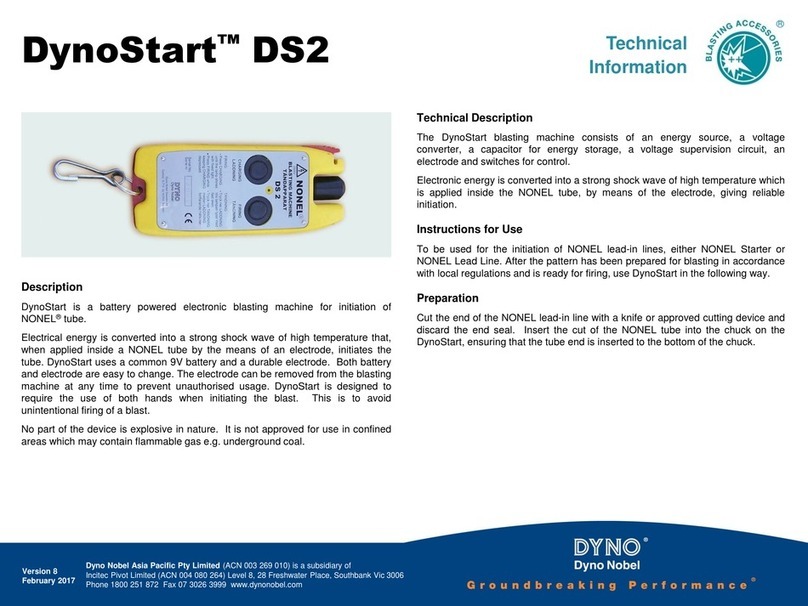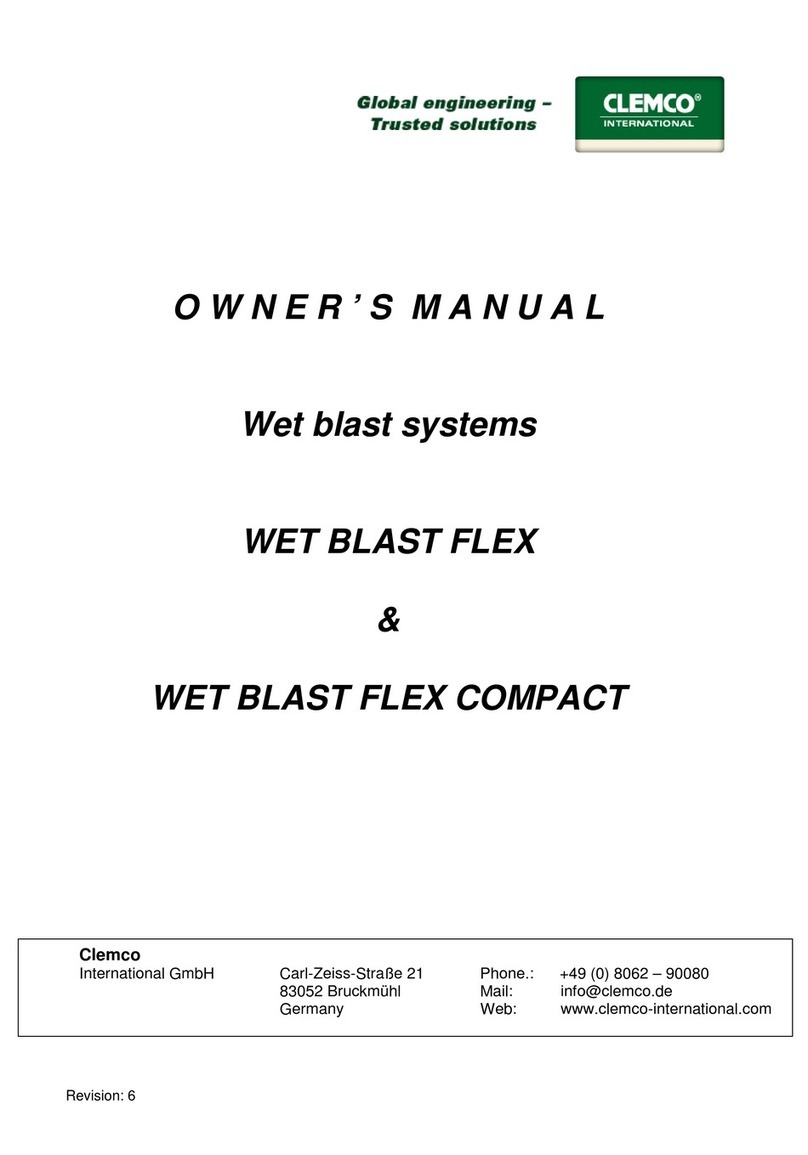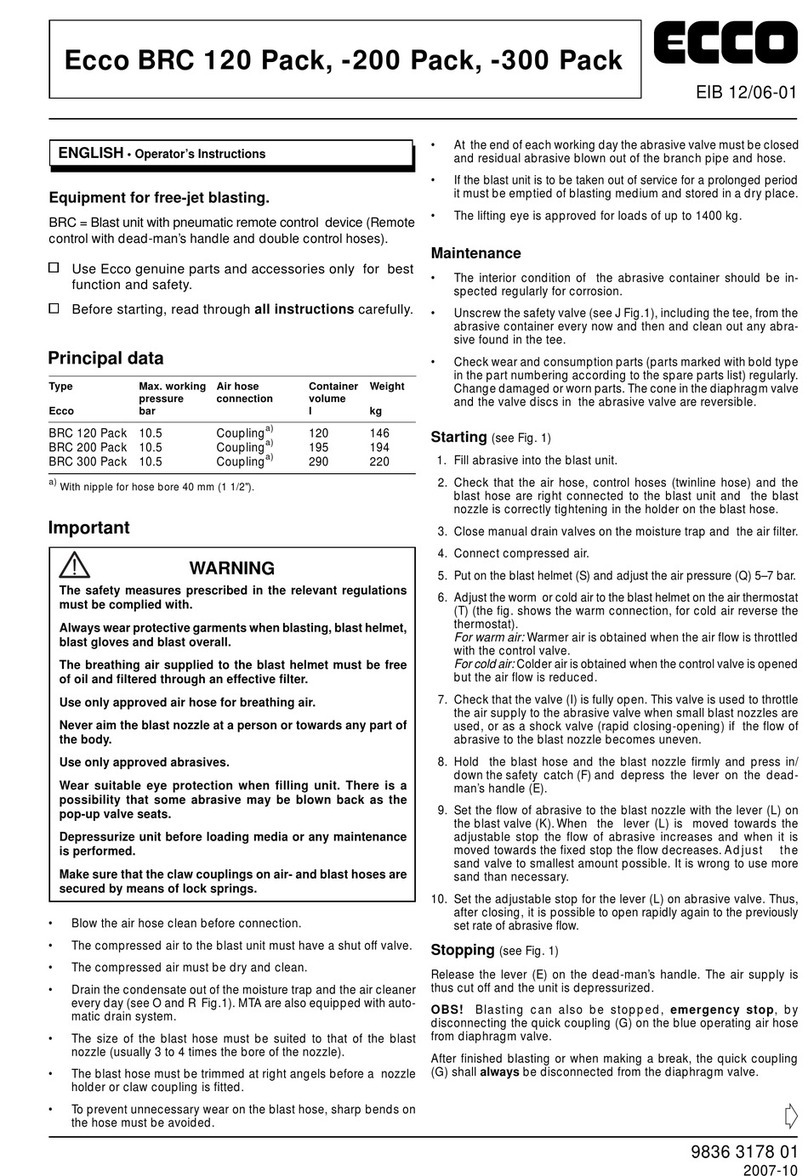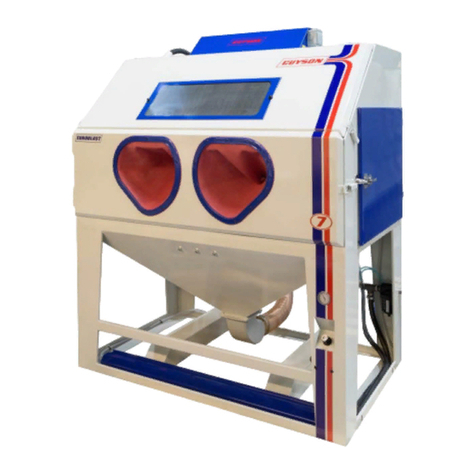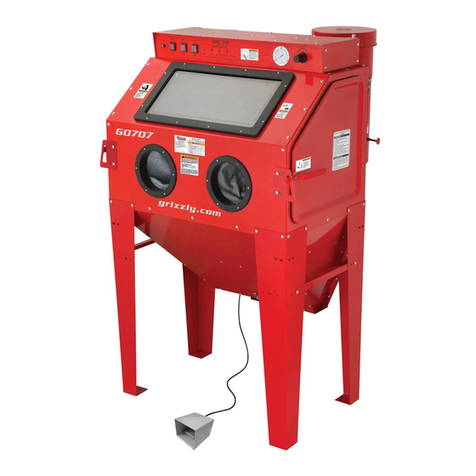
6CONTRACOR®Version 2.5
2.1 Package
Article Model Description, package
10301 DBS-100RC
Abrasive Blasting Machine, 100 L, screen,
1, remote control unit RCV, remote control
handle DMH, abrasive metering valve FSV,
RC hose.
10401 DBS-200RC
Abrasive Blasting Machine, 200l, screen,
1, remote control unit RCV, remote control
handle DMH, abrasive metering valve FSV,
RC hose.
RCV Remote control valve (5, Fig.2.1)
10880 DMH Remote control handle (11, Fig.2.1)
12103 TWINLINE
Remote control twin hose, d=6mm, roll 40 m
(4, Fig.2.1)
3. Set-up, operation and shut-down
3.1 Preparation for operation
For remote control system start up you should follow these instructions:
1 — Cover
2 — Screen
3 — Machine tank
4 — RC hose TWINLINE
5 — Remote control unit RCV
6 — Moisture and oil separator CAF-1
8 — Operator helmet COMFORT
9 — Nozzle holder
10 — Nozzle
11 — RC handle DMH
12 — Breathing air hose
14 — Safety ball valve
